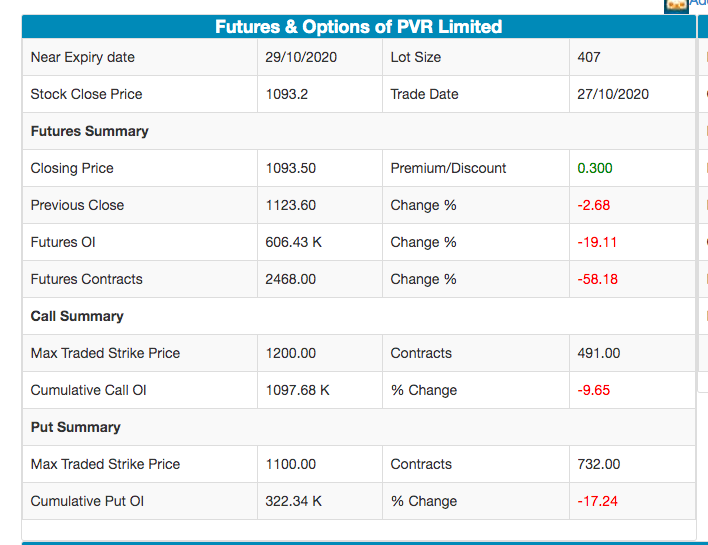
PVR weekly chart.
Looks like unseen volumes have come into PVR post april.
Usually such volumes are associated with institutions.
Looks like unseen volumes have come into PVR post april.
Usually such volumes are associated with institutions.

If you look at the big drop in march, the volumes aren't that high. Marginally higher than usual/average, but not significantly high enough to consider institutional selling.
But look at the circled region after april. That looks like institutional activity.
But look at the circled region after april. That looks like institutional activity.

Two possibilities:
1. Institutions are betting on PVR as a contrarian bet and accumulating it.
2. Institutions are realising that PVR is junk and selling it to naive retail buyers.
Let's see what's happening.
1. Institutions are betting on PVR as a contrarian bet and accumulating it.
2. Institutions are realising that PVR is junk and selling it to naive retail buyers.
Let's see what's happening.
From the shareholding patterns, we can gather the following details:
- As of sep 2020, public held 16.6%, promoter held only 18.8%, FIIs hold 34.6%, MFs and other institutions together hold the rest.



- As of sep 2020, public held 16.6%, promoter held only 18.8%, FIIs hold 34.6%, MFs and other institutions together hold the rest.




Trends wise, Mutual funds holding % has decreased from over 20% to ~15% by Sep 2020. But their major selling was between March to June.
FIIs have gradually decreased their stake in PVR from 44.9% in june to 34.6% in september.
FIIs have gradually decreased their stake in PVR from 44.9% in june to 34.6% in september.
Look at the price chart again with the above data in mind.
Altogether about 10% stake has been sold by FIIs, in PVR. But all the while the selling was going on between June to September, the price rallied.
Note the one big red candle in june first week with big volume candle.
Altogether about 10% stake has been sold by FIIs, in PVR. But all the while the selling was going on between June to September, the price rallied.
Note the one big red candle in june first week with big volume candle.

This red candle that's big is most likely when FII selling started. All the while between June to September while FIIs and other institutions together decreased stake (likely > 15%), the volumes remained lower than the big red candle, and price went up.
The only likely answer as far as I can think of is retail buying.
What do retailers know that the institutions don't know?
In between all this, the promoter had 18.4% stake by Dec 2019, and 18.8% by Sep 2020.
What do retailers know that the institutions don't know?
In between all this, the promoter had 18.4% stake by Dec 2019, and 18.8% by Sep 2020.
So, the promoter and promoter family don't have significant stake here, and also weren't confident enough to add to the stake at lower prices (4 year low) that came in march-april 2020.
If you take a look at the daily chart, PVR has formed a channel of sorts.
The arrow shows areas where price rejections are seen. The price has also spent more time towards the downside rather than towards the upside. Very little time spent on the upward direction.
The arrow shows areas where price rejections are seen. The price has also spent more time towards the downside rather than towards the upside. Very little time spent on the upward direction.

Towards the bottom half of the channel, the green candles you see don't look reassuring of buying presence or pressure in tandem with the volume present. On the contrary, the red candles have significant presence.
Combined with F&O data, you can see the possibility of shorts being built up with the cumulative open interest, when you look at the difference between the cumulative call OI and put OI. 

The first major resistance is at 920 and the next at this year's low of 700 rupees.
Keep watch of the technicals and get out if you have to, in case you aren't confident of the business regaining market share or having good quality.
Keep watch of the technicals and get out if you have to, in case you aren't confident of the business regaining market share or having good quality.
Fundamentally, PVR doesn't earn much from ticket sales given their occupancy ratio. Their main earnings is from F&B sales. You have better companies in the F&B segment to invest in.
Their Return on Capital and Return on Equity is abysmal.
1.8% for the year 2019-20 even despite being pre-covid is quite bad (given that most states started locking down only after march 2nd week).

1.8% for the year 2019-20 even despite being pre-covid is quite bad (given that most states started locking down only after march 2nd week).


Use TIKR.com for fundamental data and trendlyne.com and topstockresearch.com for techno and fundamental data.
• • •
Missing some Tweet in this thread? You can try to
force a refresh



